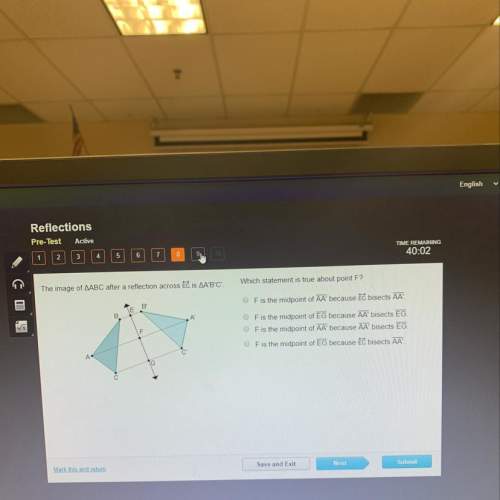
Mathematics, 02.03.2020 19:23 Kimmie2019
A large number of randomized experiments were conducted to determine whether taking a particular drug regularly would decrease the chance of getting a certain disease. For each of the experiments, the drug effect is the difference between the proportion of people taking the drug who got the disease and the proportion of people taking a placebo who got the disease. If the drug had no effect whatsoever, which of the following experimental results would be anticipated?
I. p-values will be greater than 0.05 for about 95 percent of the experiments.
II. There will be about an equal number of experiments showing positive and negative values of drug effect.
III. When 95 percent confidence intervals for the population drug effect are constructed, those confidence intervals include 0 about 95 percent of the time.
A) I only
B) II only
C) III only
D) I and II only
E) I, II, and III

Answers: 3
Another question on Mathematics

Mathematics, 21.06.2019 16:50
The rate of decay of a radioactive substance depends upon the amount present initially. the mass y (mg) of the radioactive substance cobalt-60 present in a sample at time t (years) is represented by the exponential equation y=50e −0.1315 t . answer the following questions in complete sentences. 1. how does the exponential equation above compare to the equation for simple interest that is compounded continuously? explain the similarities. 2. what is the initial amount of cobalt-60 in the sample? 2. how much cobalt-60 is left after 8.4 years? show your work. 3. what would be the y-intercept of the graph? what does it represent? 4. after how many years will the amount of cobalt-60 left be 6.25 mg? explain what happens to the cobalt-60 after 50 years? 5. discuss some “real-world” examples and uses of cobalt-60
Answers: 1

Mathematics, 21.06.2019 16:50
Which is a true statement comparing the graphs of x^2/6^2-y^2/8^2 = 1 and x^2/8^2-y^2/6^2 the foci of both graphs are the same points. the lengths of both transverse axes are the same. the directrices of = 1 are horizontal while the directrices of = 1 are vertical. the vertices of = 1 are on the y-axis while the vertices of = 1 are on the x-axis.
Answers: 2

Mathematics, 22.06.2019 05:00
Will mark brainliest, , and, rate to the best answercompare the wins-to-losses ratios for the teams.
Answers: 2

Mathematics, 22.06.2019 07:00
Determine where, if anywhere, the function f(x)=x^3+9x^2−48x+2 is not changing.
Answers: 2
You know the right answer?
A large number of randomized experiments were conducted to determine whether taking a particular dru...
Questions

English, 23.02.2021 03:20

Mathematics, 23.02.2021 03:20


English, 23.02.2021 03:20





History, 23.02.2021 03:20

History, 23.02.2021 03:20


Mathematics, 23.02.2021 03:20

Chemistry, 23.02.2021 03:20



Mathematics, 23.02.2021 03:20

Mathematics, 23.02.2021 03:20


Mathematics, 23.02.2021 03:20




